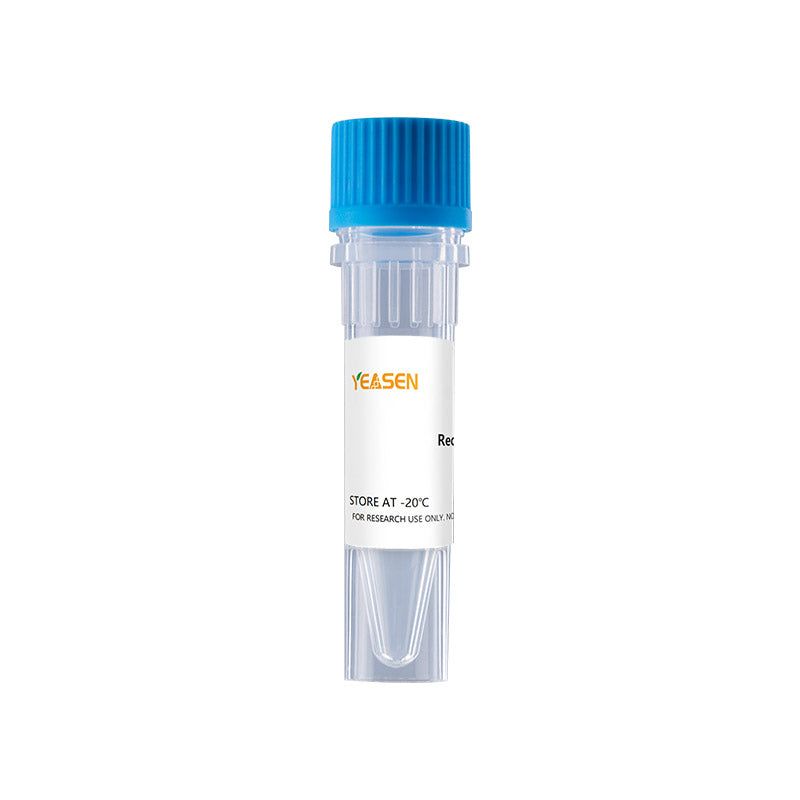Description
Neurturin is a member of the GDNF family of ligands, which include glial cell-derived neurotrophic factor (GDNF), Neurturin, Persephin, and Artemin. GDNF family proteins are distant members of the Transforming Growth Factor beta (TGF-beta ) superfamily. Similarly to other TGF-beta family proteins, Neurturin is synthesized as a precursor protein that is cleaved at the dibasic cleavage site (RXXR) to release the carboxy-terminal domain. The carboxy-terminal domain of Neurturin contains the characteristic seven conserved cysteine residues necessary for the formation of the cysteine-knot and the single interchain disulfide bond. Biologically active human Neurturin is a disulfide-linked homodimer of the carboxy-terminal 102 amino acid residues. Mature human Neurturin shares approximately 92% amino acid sequence identity with mouse Neurturin. Mature Neurturin also shares about 40% similarities with the other three members of the GDNF family ligands. Unlike other members of TGF-beta family, bioactivities of all GDNF family ligands are mediated through a unique multicomponent receptor complex composed of high affinity ligand binding component (GFR alpha -1-GFR alpha -4) and a common signaling component (cRET receptor tyrosine kinase). Each member of the GDNF family ligands has its preferred binding protein. Neurturin preferentially binds to GFR alpha -2 but can also bind GFR alpha -1 at higher concentrations. Neurturin had been shown to promote the survival of a variety of neurons including sympathetic, sensory, and central nervous system neurons. Neurturin is expressed in both neuronal and non-neuronal tissues.
Product Properties
|
Synonyms |
NRTN; NTN |
|
Accession |
Q99748 |
|
GeneID |
4902 |
|
Source |
E.coli-derived Human Neurturin, Ala96-Val197. |
|
Molecular Weight |
Approximately 23.4 kDa. |
|
AA Sequence |
ARLGARPCGL RELEVRVSEL GLGYASDETV LFRYCAGACE AAARVYDLGL RRLRQRRRLR RERVRAQPCC RPTAYEDEVS FLDAHSRYHT VHELSARECA CV |
|
Tag |
None |
|
Physical Appearance |
Sterile Filtered White lyophilized (freeze-dried) powder. |
|
Purity |
> 96% by SDS-PAGE and HPLC analyses. |
|
Biological Activity |
The biologically active as determined by its binding ability in a functional ELISA. Fully biologically active when compared to standard. |
|
Endotoxin |
< 1.0 EU per 1μg of the protein by the LAL method. |
|
Formulation |
Lyophilized from a 0.2 μm filtered concentrated solution in 30 mM Citrate Sodium, pH 4.2, 400 mM NaCl, with 0.02% Tween-20. |
|
Reconstitution |
We recommend that this vial be briefly centrifuged prior to opening to bring the contents to the bottom. Reconstitute in sterile distilled water to a concentration of 0.5 mg/mL. Stock solutions should be apportioned into working aliquots and stored at ≤ -20℃. Further dilutions should be made in appropriate buffered solutions. |
Shipping and Storage
The products are shipped with ice pack and can be stored at -20℃ to -80℃ for 1 year.
Recommend to aliquot the protein into smaller quantities when first used and avoid repeated freeze-thaw cycles.
Cautions
1. Avoid repeated freeze-thaw cycles.
2. For your safety and health, please wear lab coats and disposable gloves for operation.
3. For research use only!
Payment & Security
Your payment information is processed securely. We do not store credit card details nor have access to your credit card information.
Inquiry
You may also like
FAQ
The product is for research purposes only and is not intended for therapeutic or diagnostic use in humans or animals. Products and content are protected by patents, trademarks, and copyrights owned by Yeasen Biotechnology. Trademark symbols indicate the country of origin, not necessarily registration in all regions.
Certain applications may require additional third-party intellectual property rights.
Yeasen is dedicated to ethical science, believing our research should address critical questions while ensuring safety and ethical standards.

